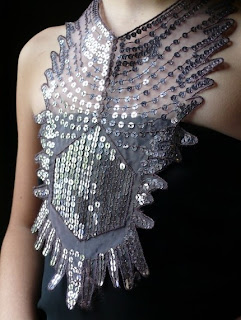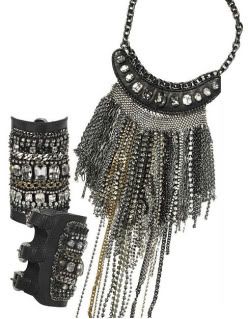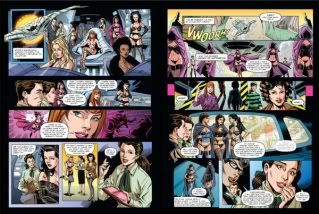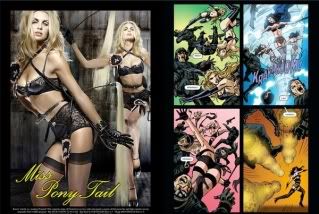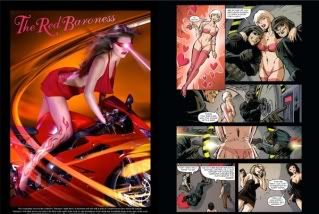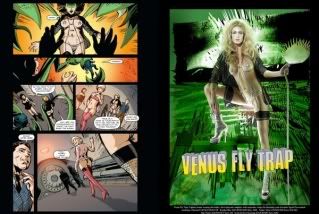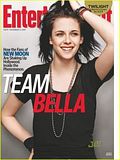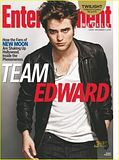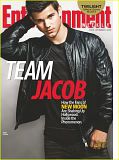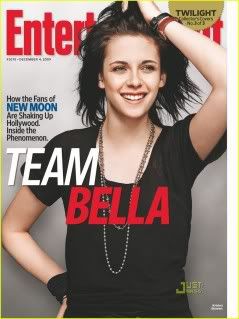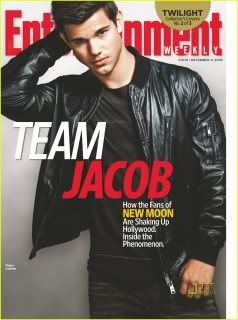Dior Haute Couture coat on him and hand painted polka dot dress on her
Balenciaga silk dress and ankle boots
Grace Coddington, Us Vogue
“White Heat,” March 2006, Arthur Elgort
Tabitha Simmons
V Magazine, “Cinema Scope,” V 27, Glen Luchford
Tom Ford for YSL
Tabitha Simmons
Dolce & Gabbana, F 2009, Steven Klein
Tonne Goodman, US Vogue
“Touch and Go,” August 2008, Steven Klein
Peer Review
Softness and a shirred collar give this jacket a blouselike appeal. Valentino violet cashmere round-neck jacket.
Post Production
Even in neutral shades, a shapely silhouette can't help drawing attention. Calvin Klein Collection beige wool jacket and fawn slim skirt. Hermès scarf. Banana Republic leather gloves. Marni leather handbag.
Primp My Ride
Subtract 1980s-power-suit shoulder pads and add a subtle organza overlay for ladylike results. Carolina Herrera multicolor tweed wool double-breasted jacket and pencil skirt. Michael Kors leather bag and pumps.
Tactile Maneuver
For a youthful edge, trade the predictable white shirt for one with playful detail and temper with an urbane cable-knit-like jacket. Bottega Veneta silk-wool blazer, silk-georgette blouse with leather petal appliqués; Shetland wool pencil skirt. Daniel Storto gloves. Devi Kroell stingray bag.
“Coastal Blend,” December2008, Mario Testino
Left, Prey Love: With its leopard motif, jeweled neckline and jet-bead Empire waist, there’s little need to go wild on embellishment. Prada silk faille dress; Neiman Marcus. Banana Republic gloves. On Hamm: Brooks Brothers dinner jacket and tuxedo short. Giorgio Armani trousers. Ralph Lauren bow tie.
Right, Ensemble Piece: When everything –baubles, belt, big pockets – shines equally. Ports 1961 by Tia Cibani silk faile cocktail dress; Ports 1961, Los Angeles. Verdura necklace. Tiffany & Co. brooch. YSL belt.
Camilla Nickerson, W
“Before Night Falls,” September 2003, Mario Testino
Alexander McQueen snow white Mongolian lamb jacket. Vera Wang stone chiffon with black ribbon cinched waistband
Camilla Nickerson, W
“Dominica,” March 2009, Juergen Teller
Ralph Lauren Collection’s silk jacket and silk crepe pants, at select Ralph Lauren stores, Kenneth Jay Lane earrings; Louis Vuitton bangles.
Camilla Nickerson, W
“Washington DC,” February 2008, Juergen Teller
Marc Jacobs’s silk dress, at Marc Jacobs, Las Vegas. Louis Vuitton pumps.
TSE’s cashmere and nylon cardigan and cashmere, nylon and steel wool dress, TO order, at Tse, 800.487.3692; Miu Miu’s satin briefs, at select Miu Miu boutiques. Yves Saint Laurent necklace; Louis Vuitton pumps.
Karl Templer, Vogue Italia
“Super Models Enter Rehab,” July 2007, Steven Meisel
Katie Grand, founder of Pop and Love
Solve Sundsbo photographed Christina Kruse for POP Magazine on September 17, 2008 in London.






